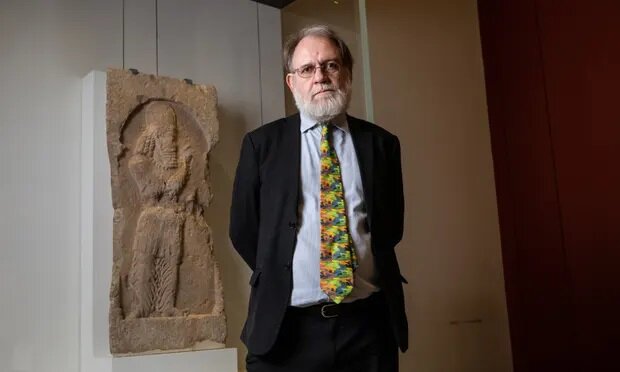Smuggled Iranian bas-relief worth £30m seized at UK airport

TEHRAN – UK authorities have seized a smuggled Iranian bas-relief carving expected to be worth £30 million.
The ancient treasure, which depicts an imposing male figure carved in the 3rd century CE, will go on show at the British Museum before going back home, the Guardian reported on Saturday.
Experts say this Sasanian rock relief is such an important sculpture that if it appeared on the art market today it could fetch more than £30m.
It was heading for the black market in Britain when it was seized at Stansted airport, the report said.
The haphazard packaging, which may have been meant to imply that it was a useless item, made Border Force officers suspicious. The over-one-meter-tall antique was hacked out of live rock or on-site carved rock.
Dr. St John Simpson, a senior curator and archaeologist in the British Museum’s department of the Middle East, said: “We almost never come across a case of something being cut out of the“living rock.” That’s a level of brutalism that surpasses anything.
“You’ve even got felt-tip marks on the back before they’ve used an angle grinder to slice diagonally behind it and across the top. It was then packed in an incredibly bad manner, in a small, almost unpadded crate held together with nails.
“If it had been a state-of-the-art art-handling type crate, that would have attracted a different sort of attention because it required all sorts of paperwork.” He has identified it as a unique rock relief sculpture dating to the period of the Sasanian empire, AD224-651.
“It belongs to a period when Iran was the center of a powerful empire stretching from Syria to the Caucasus and Central Asia, and with its capital at Ctesiphon, south of present-day Baghdad,” he said. “The Sasanians were powerful rivals of Rome and famous today for their fine silverware and cut glass.”
It is impossible to pinpoint the precise location because the bas-relief has been carved from calcareous limestone, which is found all over Iran. Only a small number —about 30, mostly from the third century— of Sasanian rock reliefs are known to exist. Nearly all of them are in the province of Fars, which is a relatively small area of Iran and is where they originally came from.
Simpson said: “We suspect it comes from somewhere in the Shiraz area. Stylistically, it is similar to one known in the region. I think it probably is part of a big sequence. There might be more bits out there.
“The lack of an inscription makes it impossible to identify the person depicted, but his dress and diademed headdress signifies him as a person of high rank. His gesture of greeting and submission, with a raised, bent forefinger, is a feature of Sasanian art when figures are in the presence of royalty, which suggests that this was part of a larger composition, with the king to the right and perhaps other figures behind.”
Due to the poor packing, the relief had split in half. Conservationists have now repaired it for the British Museum.
“It looks amazing,” Simpson said. “It is stunningly attractive. The valuation could be anything, really. We’re talking £20m to £30m-plus. There’s never been anything like it on the market.”
He said the artifact would be “incredibly valuable” on the black market.
Furthermore, the Iranian government gave the British Museum permission to display the item for three months after it was formally forfeited to the Crown before sending it to the National Museum in Tehran.
In a statement, Seyyed Mahdi Hosseini Matin, chargé d’affaires of the Islamic Republic of Iran in London, said: “We sincerely hope that further expansion of cooperation between the British Museum and the Iranian Embassy in London would continue to be effective in fighting against illicit trafficking of cultural properties and protect the cultural heritage of mankind.”
The Sassanid era, which saw a general renaissance in Persian art and architecture, is of utmost significance to the history of the country.
AFM
Leave a Comment